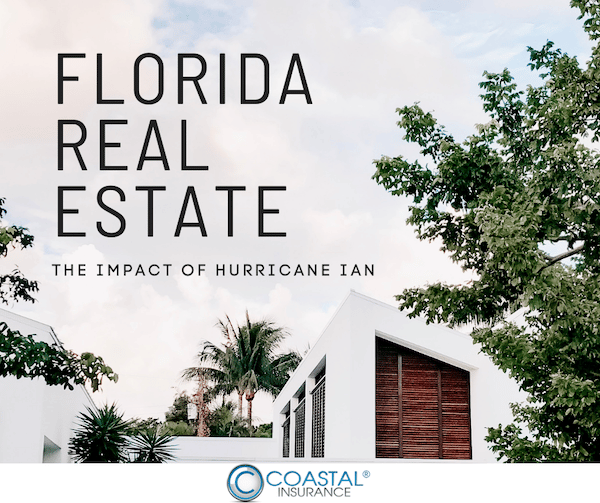 Many people think that home insurance is more expensive by the water because homeowners may also be required to buy flood insurance.
Many people think that home insurance is more expensive by the water because homeowners may also be required to buy flood insurance.
While flood insurance is an added expense that could be required by your mortgage lender if your home is near the water, buying flood insurance does not affect your home insurance rates, although some homeowners insurance companies will require you maintain a flood insurance policy to be eligible for the most competitive rating tier.
Homeowners insurance and flood insurance are two separate policies.
If you buy a home on Long Island’s North Shore or South Shore, you may already be aware that you should budget for a separate flood insurance policy.
If you are buying a home or shopping around for home insurance, you may be surprised to discover that your home insurance premium may also be higher for your home near the water.
You may also have a higher deductible, separate from your regular home insurance deductible.
Even if you don’t live directly on one of the shores, you could be subject to higher insurance rates if you live a certain distance from the water and your home is determined to be in a high-risk area.
Understanding why it costs more to insure your home near the water can help you understand your home insurance bill, budget when you’re buying a house, and ensure you are getting a reasonable price for your homeowners’ insurance.
Insurance for Homes Near the Water Costs More Due to Wind Exposure
Since flood insurance is a separate policy, it is not actually the risk of water damage from flooding that increases your home insurance premiums if you have a home near the water.
It sounds counterintuitive, but it costs more to insure a home near the water because of wind exposure.
Even homes that are several miles from Long Island’s shorelines could experience increased winds and greater risk of damage during a hurricane, nor’easter, or another storm.
It may not seem like a house that is just north of Montauk Highway on Long Island is directly on the water, but the wind hazards and risk of hurricane damage typically associated with waterfront property can extend as far north as Sunrise Highway and as far south as Northern State if you’re traveling down from Long Island’s North Shore.
You could live a few miles from Long Island’s coastlines and pay more for home insurance without enjoying the benefits or prestige of beachfront property.
But at least, after reading this article, you will understand why you could pay more for insurance than your neighbors a few miles inland.
Expect a Higher Deductible When You Purchase a Home Near the Water
Not only can you expect to pay higher home insurance rates for your Long Island home near the water, but you may also have a separate, higher deductible for catastrophic wind damage.
To keep regular home insurance rates low, carriers often have a separate deductible for catastrophic wind damage.
Your home insurance deductible for a home fire on Long Island or damage from a burst pipe may be significantly less than your deductible for catastrophic wind damage.
Most policies have a catastrophic wind deductible that is 5 percent of the home’s insured value.
So, if you have a $750,000 home on the North Shore, your regular home insurance deductible may be only $5,000. Your catastrophic wind damage deductible, however, could be as high as $37,500.
Higher deductibles help keep rates affordable and prevent frivolous claims. In the event of a hurricane, Long Island homeowners near the water aren’t likely to make a claim for a minor loss.
But the catastrophic wind damage insurance is available to help during difficult financial times. If the roof blows off during a storm, rain gets in, and the entire home needs to be rebuilt, your home insurance should cover it.
Insurance Carriers Use Reinsurers to Reduce Their Risk and Keep Premiums Low
If your home has greater potential to be destroyed during a hurricane, nor’easter, or other storms, it makes sense that your insurance premium and deductible will be higher than your neighbors who live further inland.
But it is not necessarily your insurance carrier or broker who is charging higher rates for your home near the water.
Traditional insurance carriers sell policies to homeowners and then buy wholesale policies from international re-insurers, carriers who are large enough to take on the greater risk of homes near the water.
Swiss Re, Zurich Re, and Berkshire Hathaway are examples of wholesalers of catastrophic reinsurance. These international carriers write billions of dollars in policies worldwide every year. They have the resources to do wind-modeling of specific areas to determine the risk of catastrophic damage in different regions.
These reinsurers take on the bulk of the risk in the event of a catastrophic windstorm, leaving your carrier liable for only a fraction of the costs.
Because reinsurers are global companies, they are able to diversify their clients, geographically, and reduce their risk of a catastrophic event hitting most of their customers at one time.
Reinsurers may hold home insurance policies in California, Taiwan, and Long Island all at the same time.
While it’s a possibility that another superstorm like Sandy could result in a large number of claims from Long Island homeowners, a catastrophic event probably won’t affect three major cities across the world at once.
Because they have a large amount of working capital and a diversified customer base, reinsurers can take on greater risk than smaller national carriers.
On the other hand, if a carrier has most of their customers in one geographic region, they may not be able to cover all the losses.
Reinsurance Companies Have the Funds to Cover Homeowners During the Worst Storms
In order to maintain their A+ carrier rating from A.M. Best, insurance carriers must have the means to cover two 100-year events in one year.
A 100-year storm is not necessarily an event that only occurs once every 100 years. Rather, it is an event with a 1 percent statistical probability of occurring once in any year.
Superstorm Sandy, the catastrophic weather event that most Long Islanders remember from October 29, 2012, was deemed a 260-year storm, according to the Journal of Geophysical Research.
That means there is a 1/260 chance of another storm like Sandy hitting the East Coast in any given year.
National and local carriers guarantee they can take on that level of risk by selling their policies to reinsurers.
The reason your home insurance costs more if you live near the water is that reinsurance companies charge more due to the perceived risk based on their sophisticated computer modeling.
By taking on a portion risk, reinsurance companies make it possible for smaller national and local carriers to safely insure high-risk homes near the water.
Otherwise, millions of homeowners across Long Island might not be able to get home insurance if they live close to the water.
Protect Your Home from the Next Storm
You may be able to lower your insurance premiums by taking steps to protect your home from damage before the next big storm.
Consider installing storm shutters, which could provide a home insurance discount.
Also, consider eliminating older structures on your property. Additional structures are covered by your home insurance policy, but if you don’t need that 40-year-old shed or you could replace it with a sturdier, new shed that has less risk of damage in a storm, you could reduce your home insurance rates.
If you need to upgrade your roof, ask about hurricane-resistant materials.
Not only will these steps help keep your family safe during a big storm, but they could also reduce the chances you will have to make a home insurance claim and might even lower your premiums.
During Hurricane Season, Home Insurance Provides Peace-of-Mind
If Long Island is ever hit by another hurricane or a superstorm like Sandy, homeowners want to know they are protected by their home insurance policies.
You don’t want to wonder if your insurance company will have the funds to pay your claims if your home needs to be remodeled or even completely re-built after a 100-year (or worse) storm.
Reinsurance companies offer the peace-of-mind Long Islanders need, enabling local insurance agencies to maintain their A.M. Best A+ rating and honor claims even following an island-wide catastrophe.
With hurricane season in full swing, it’s important to read your home insurance policy carefully to determine if you are covered for catastrophic wind damage.
Speak to your insurance agent if you have any questions about your coverage levels or deductibles. A reputable agent will find a policy for you with the lowest premiums and maximum coverage possible for your home and geographic area.




![IBA Top Retail Brokers 2024 Medal[88] IBA's Top Retail Broker 2023](https://coastalinsurancesolution.com/wp-content/uploads/2024/07/IBA-Top-Retail-Brokers-2024-Medal88.png)



